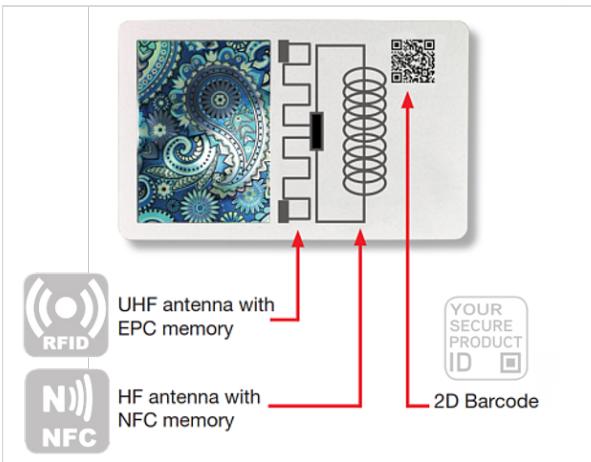2.2 Supply Chain Security Solutions to address the risk scenarios
2.2.2 Using metameric inks Technology submission 2 This submission can be described as a food packaging authentication system based on security inks and Information and Communications Technologies (ICT). In particular, it uses metameric, invisible or other types of security inks that give a digital identity to each item that needs to be authenticated by the customer. These create a hidden graphical code that is readable through a digital algorithm (using a mobile phone camera, for instance). These hidden codes can be applied using the standard printing technology of a production/packaging company, facilitating the implementation of the solution. Metameric inks combine two colours that match under certain lighting conditions, allowing the possibility to show features that are not visible in other conditions. For instance, a certain illumination by a lighting tool or the use of a colour filter can show the appearance of a number on a label using metameric inks. The same number would not be visible in different lighting conditions or without the colour filter. The use of metameric inks for the creation of the product’s digital identity can potentially allow for a more secure management of distribution logistics throughout the supply chain. On the other hand, invisible inks combine components to produce a fluid that is transparent and invisible to the naked eye, but visible under certain operating conditions. The metameric inks and invisible inks are applied on the food packaging to uniquely encode the product and work in combination with other tools, in particular: 1) a smart phone app equipped with a specific algorithm for the digital decoding of the hidden printed code, 2) a web-based interface for the management of information connected with the production in the supply chain, and 3) ICT communication infrastructure for product authentication. One of the important benefits of this technology submission lies in the combination of all these elements and in the way in which the unique digital identity of the product is created. Another technology option that can be used in authentication is microtaggants. A taggant refers to a chemical or physical marker added to materials to enable various forms of testing. Physical taggants are highly variable but are typically microscopic in size, included at low levels, and simple to detect. The use of microtaggants allows for the creation of a potentially unlimited number of codes while, according to the submission received, their use would also be economical, especially if the tagging is performed on bulk products and if the existing printing infrastructure can be used to adopt the technology. Submission received from Tecnoalimenti
This submission presents all the interesting features previously highlighted and can be used to show a different way in which secure coding can be achieved, in particular through the use of metameric inks. The code is coupled with a secure track and trace system which also uses an app to monitor the movement of products along the supply chain and for their authentication. For what concerns covert identification, the solution offers a clear identification method through the use of metameric inks – where two colours matching under one set of lighting conditions can make the identification element appear and look quite different under another set – and of invisible inks. However, in these cases the customer needs to know in advance how to find and decode the hidden code. The codes can be adapted to different shapes and designs, making them easy to hide. The use of metameric inks is important for the security of this option. First of all, it renders the codes difficult to imitate, since a special pigment series is needed to produce them. In addition, they have good durability, and after a certain period of time, the colour development characteristics will not change or become affected by outside factors. Additionally, since the metameric inks are invisible and printed directly on the package, they cannot be removed from the packaging.
32











